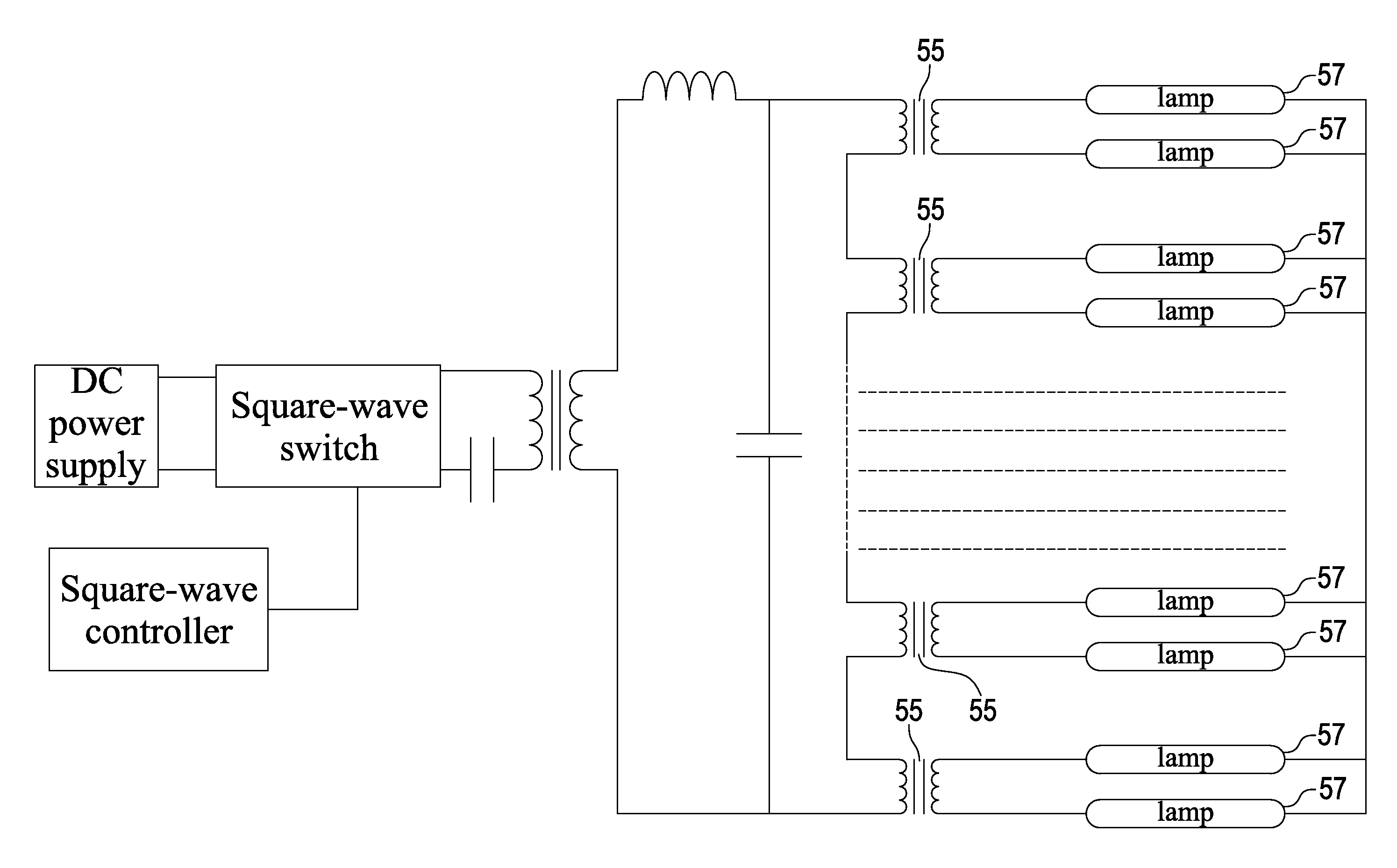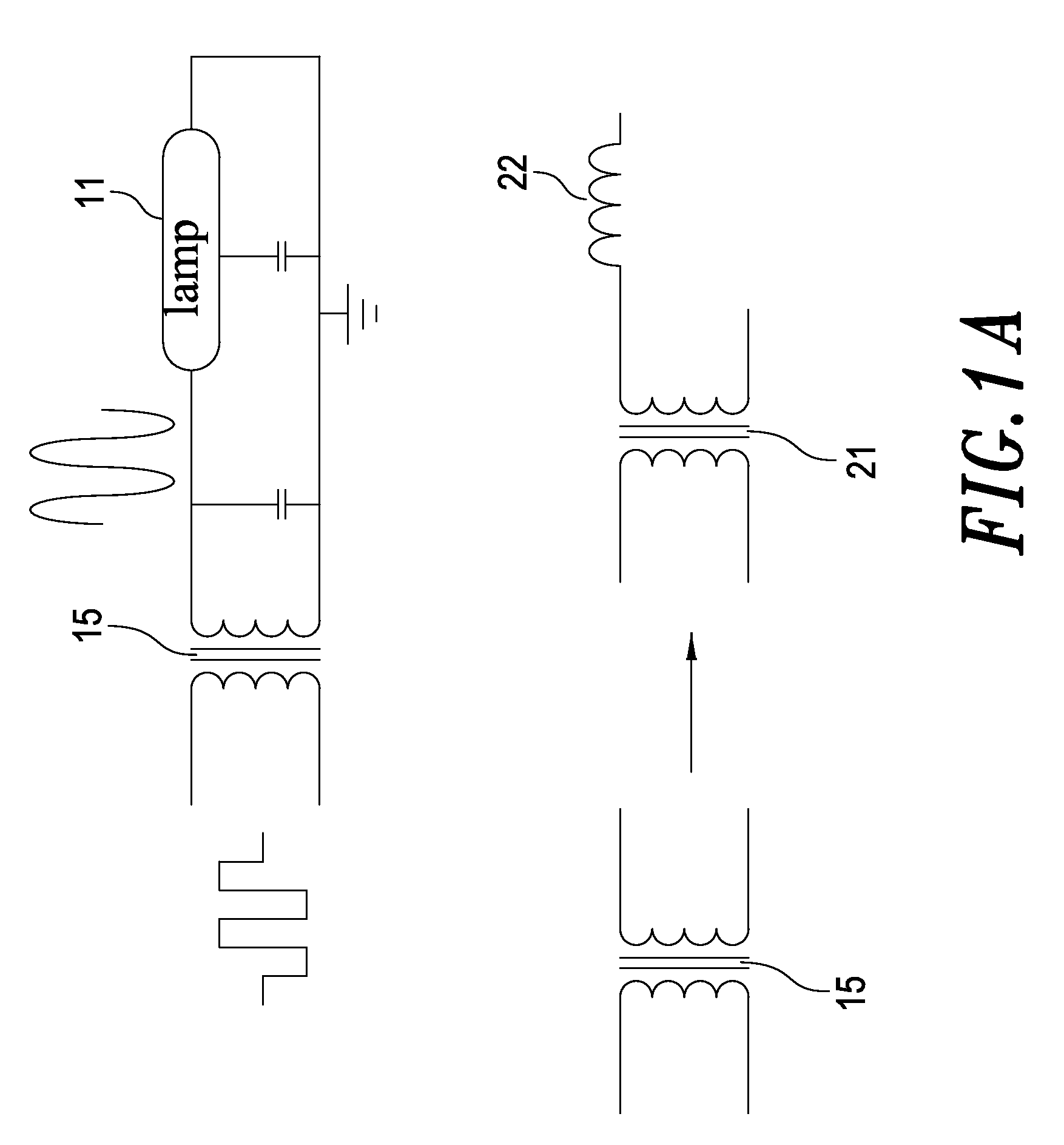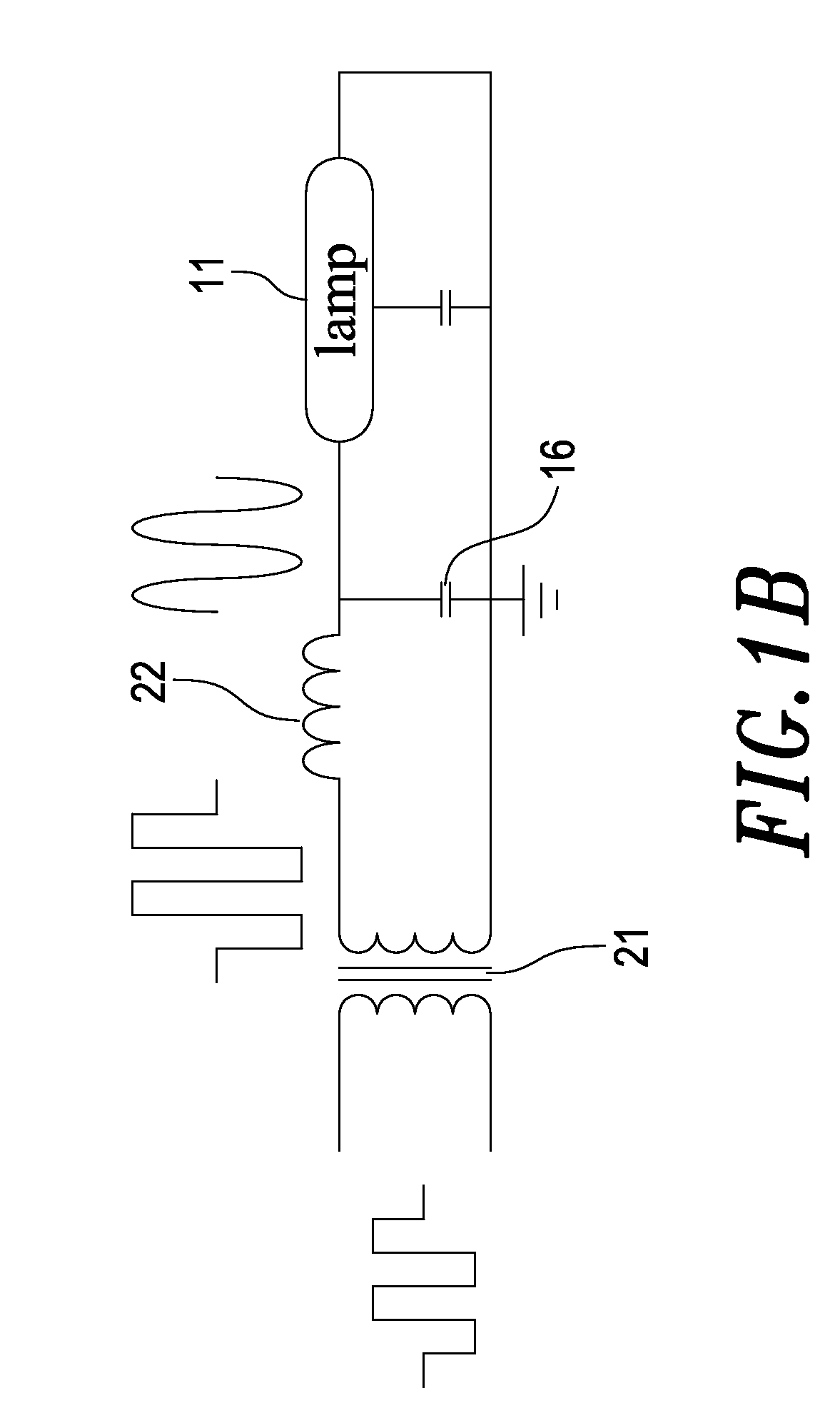Coupled lamp driving device
a driving device and lamp technology, applied in the direction of gas discharge lamp usage, climate sustainability, light sources, etc., can solve the problems of poor coupling effect, high leakage of leakage transformers, high temperature, etc., and achieve the effect of balancing a plurality of lamps, maintaining a uniform luminance over the lamps, and increasing the coupling coefficien
- Summary
- Abstract
- Description
- Claims
- Application Information
AI Technical Summary
Benefits of technology
Problems solved by technology
Method used
Image
Examples
first embodiment
[0026]Referring to FIG. 3, a circuit diagram of a coupled lamp driving device according to the present invention is shown therein. As shown, the lamp driving device 3 comprises an alternating current (AC) power supply 31, which provides a sine-wave signal to two ends of each of a plurality of coupled transformers 32 connected to each other at their primary sides. Through the plurality of coupled transformers 32 connected at their primary sides, the sine-wave signal is directed to the two ends of the primary side of each of the coupled transformer 32. A secondary side of the coupled transformer 32 is connected to a high voltage end of a lamp 33 at one end, and connected to a reference level at the other end. Since the primary sides of the coupled transformers 32 are connected in series, a current flown on the primary side of each of the coupled transformers 32 is equal to each other, respectively. Further, since the numbers of coils of the primary and secondary sides, respectively, a...
second embodiment
[0028]Referring to FIG. 4, a circuit diagram of the coupled lamp driving device according to the present invention is shown therein. As shown, the coupled lamp driving device 4 comprises a direct current a direct current (DC) power supply 41 which outputs a DC power. The square-wave switch 42 is used to receives the DC power, convert the DC power into a square-wave signal and then a sine-wave signal through an inductor 43 and a capacitor 44, and then provides the sine-wave signal to two ends of each of a plurality of coupled transformers 45 connected at a primary side thereof.
[0029]A square-wave controller 46 is used to output a control signal to the square-wave switch 42.
[0030]Each of the plurality of coupled transformers 45 is connected to each other at the primary side thereof and directs the sine-wave signal obtained through the inductor 43 and the capacitor 44 to the two ends of the primary side of each of the plurality of coupled transformers 45 and connected to one end, a hig...
third embodiment
[0034]FIG. 6 is a circuit diagram of the coupled lamp driving device according to the present invention. As shown, the coupled lamp driving device. As shown the coupled lamp driving device 50 comprises a direct current (DC) power supply 51, which outputs a DC power;
[0035]A square-wave switch 52 is used to receive the DC power, convert the DC power into a square-wave signal and then output the square-wave signal.
[0036]The driving transformer 53 is used to receive the square-wave signal from the square-wave switch 52 at a primary side thereof. Between the square-wave switch 52 and the driving transformer 53, a capacitor 58 may be disposed for blocking a DC noise. Further, the driving transformer 53 converts the square-wave signal into a sine-wave signal through a leakage thereof (not shown) and a capacitor 54, and provides the sine-wave signal to two ends of each of a plurality of coupled transformers 55 connected to each other at a primary side thereof.
[0037]A square-wave controller ...
PUM
 Login to View More
Login to View More Abstract
Description
Claims
Application Information
 Login to View More
Login to View More - R&D
- Intellectual Property
- Life Sciences
- Materials
- Tech Scout
- Unparalleled Data Quality
- Higher Quality Content
- 60% Fewer Hallucinations
Browse by: Latest US Patents, China's latest patents, Technical Efficacy Thesaurus, Application Domain, Technology Topic, Popular Technical Reports.
© 2025 PatSnap. All rights reserved.Legal|Privacy policy|Modern Slavery Act Transparency Statement|Sitemap|About US| Contact US: help@patsnap.com



